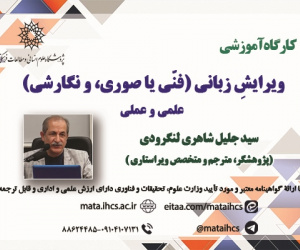تحلیل و ارزیابی میزان زیست پذیری سکونتگاه های روستایی نواحی پیراشهری (مطالعه موردی: کلانشهر اصفهان) (مقاله علمی وزارت علوم)
درجه علمی: نشریه علمی (وزارت علوم)
آرشیو
چکیده
کیفیت زندگی مطلوب در نواحی روستایی یکی از اهداف برنامه ریزان روستایی می باشد، چراکه می تواند راهگشای معضلات لاینحل روستایی ازجمله فقر، اشتغال و مهاجرت های گسترده باشد. تحقیق حاضر باهدف شناسایی مهم ترین اولویت های زیست پذیری از دیدگاه ساکنان، ارزیابی سطح زیست پذیری در سکونتگاه های روستایی را مورد ارزیابی قرار می دهد. در این راستای نیز، در پژوهش کاربردی حاضر که با روشی توصیفی– تحلیلی انجام گرفته است، وضعیت زیست پذیری محیط های 8 روستای پیرامون کلانشهر اصفهان با جمع آوری داده ها موردسنجش قرار گرفت. با توجه به تعداد خانوارهای کل در جامعه نمونه (5940 خانوار=N) و با خطای 05/0 درصد در فرمول کوکران، حجم نمونه برابر 360 خانوار محاسبه که با روش تصادفی سیستماتیک از جامعه روستایی انتخاب شدند و سپس تجزیه وتحلیل آن ها با آزمون های استنباطی(خی دو، تی تک نمونه ای، تحلیل مسیر، رتبه ای فریدمن) انجام گرفت. نتایج به دست آمده نشان دادند که با توجه به میانگین به دست آمده برابر 96/2 می توان عنوان کرد که وضعیت زیست پذیری در سطح رضایت بخشی نمی باشد. در این میان، میانگین سطح زیست پذیری روستاهای موردمطالعه در بعد اقتصادی با میانگین 77/2، بعد اجتماعی با میانگین 93/2، محیطی 15/3 و کالبدی با میانگین برابر 02/3 محاسبه گردید. با توجه به اینکه بعد اقتصادی دارای کمترین میزان می باشد، به صورت مستقیم، بیشترین تأثیر را در رقم خوردن این وضعیت نامطلوب داشته است.Measuring and analyzing the livability level of rural settlements in peri-urban areas (Case study: isfahan Metropolis)
Today, livability and creating a livable environment in rural areas that guarantees the desirable quality of life for villagers and can provide an active and dynamic environment for the work, residence and leisure of villagers is the main goal of rural development planners because The only way to change the situation of the villages from an environment with low livability and quality of life to an environment with a favorable quality of life is to solve intractable rural problems such as poverty, unemployment and mass migrations. In this regard, in the present applied research, which was carried out with a descriptive-analytical method, the livability of the environments of 8 villages around the metropolis of Isfahan by collecting data in the theoretical part with the documentary method and in the practical part It was measured by a survey method. According to the total number of households in the sample community (N = 5940 households) and with an error of 0.05% in Cochran's formula, a sample size of 360 households was calculated, This research is a quantitative research. To achieve this goal, he uses statistical methods and tests. On the other hand, from the point of view of research classification based on the purpose, it is of applied type. Because it seeks to apply theories, laws, principles and techniques formulated in basic research to solve practical and real problems. Also, in terms of the possibility of controlling the variables, the research is a quasi-experimental type of research, because due to the post-event nature of the research, it is not possible to control the variables completely. The collection of information in the research was based on two library and field methods. In the library method, review of research background and literature was considered, and in the field method, the questionnaire created by the researcher was considered. According to the variables of the research and also the method of analysis, the questionnaire was prepared in the form of open and closed questions and also included spectrums in the form of a Likert spectrum in the nominal and rank measurement scale and in some aspects, an interval, and was given to the participants. But in connection with the data collection tool (questionnaire), to ensure the similarity of the questions taken from previous researches with the variables of the research and to reveal the formal validity of these indicators and its similarity with the villages of the studied area; Academic experts in the field of rural planning were examined. After receiving their opinions, the required parts of the questionnaire were revised and a number of unimportant questions were removed. Cronbach's alpha test was used to check the reliability and reliability of the research questionnaire data. Therefore, first, a sample of 30 questionnaires was distributed in the target population, and according to the Cronbach's alpha value, the final revision of the questionnaire was made and distributed to the relevant sample. Finally, for the present study, the value of Cronbach's alpha for all research variables was 0.79, which has an acceptable level.which were selected by systematic random method from the rural community, and then their analysis was carried out using inferential methods (chi-square, one-sample t-test, path analysis, Friedman's rank) the obtained results showed that according to the obtained mean of 2.94 and the significant value of 0.006 At the 95% confidence level, he stated that the livability of the studied villages is not at a satisfactory level. Meanwhile, the average livability level of the studied villages was calculated in economic dimension with an average of 2.78, social dimension with an average of 2.92, environmental dimension with an average of 3.16 and physical dimension with an average of 3.01. As can be seen, the economic dimension with the lowest average result has the most unfavorable situation in terms of livability in the studied rural environments. Also, its results showed that this is the economic dimension that has the greatest impact on the formation of the existing situation of the livability level of the studied villages, which is an unfavorable situation. In addition to the fact that the economic dimension has had the greatest impact on this unfavorable situation in a direct way, it has also indirectly and by affecting the unfavorable performance of the physical and environmental dimensions, it has increased the severity of the unfavorable livability of the studied villages.






